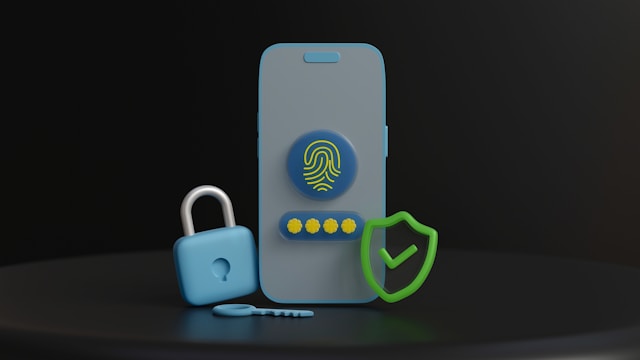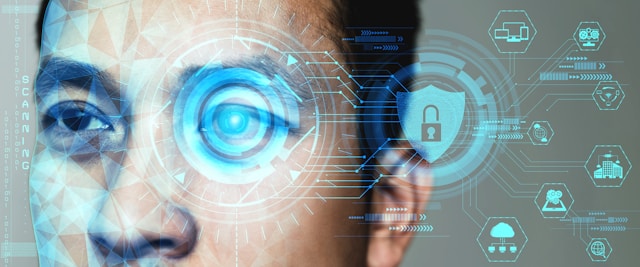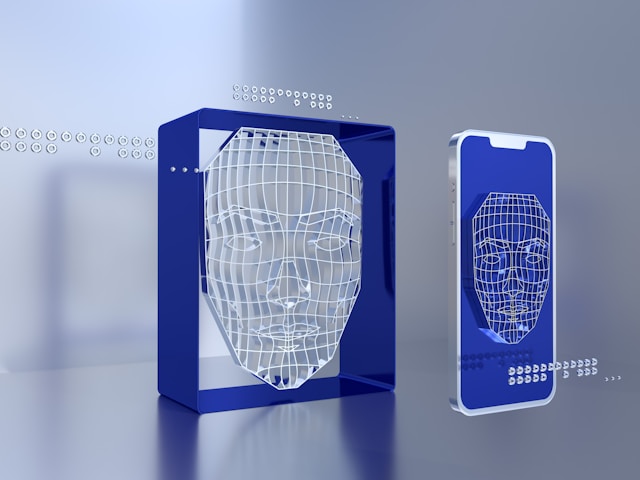We’ve all been there—trying to remember yet another password. And let’s face it, “123456” or “password” aren’t exactly the height of security. That’s where biometrics come in. If you’ve used your fingerprint or face to unlock your phone, you’re already familiar with biometric security. But what exactly is it, and why should we consider using it for app security? Let’s dive in.
What are Biometrics?
Biometrics are a way of using unique physical or behavioral traits to verify a person’s identity. We’re talking about fingerprints, facial recognition, iris scans, and even voice recognition. These methods are not only more secure but also incredibly convenient. Let’s dive into why they’re a game-changer for mobile app security.
Why Biometrics are the Future of Security
Convenience
First and foremost, convenience. Biometrics take the hassle out of security. Think about how many passwords you’ve had to remember over the years, and how many times you’ve been locked out of an account because you just couldn’t recall the right combination of letters, numbers, and symbols. With biometrics, your unique physical traits become your password. Whether it’s your fingerprint, face, or voice, these are always with you and ready to use. It makes accessing your phone, apps, and secure data quick and painless.
Enhanced Security
Security is a major concern for all of us, especially with the increasing number of data breaches. Biometrics offer a higher level of security because they are incredibly difficult to replicate. Unlike passwords, which can be guessed or hacked, your fingerprint or facial structure is unique to you. Biometrics reduce the risk of unauthorized access because they require a unique biological signature that is much harder to fake or steal compared to traditional passwords. For instance, even if someone knows your password, they can’t replicate your fingerprint or facial features.
Multi-Factor Authentication (MFA)
Biometrics can be used as part of multi-factor authentication (MFA), adding an extra layer of security. MFA requires users to provide two or more verification factors to gain access to a resource such as an application or online account. By combining something you know (like a password) with something you are (biometric data), the security is significantly strengthened. This dual-layer approach makes it exponentially harder for unauthorized users to gain access.
Speed
Biometric authentication is fast. Really fast. It takes just a fraction of a second to unlock your device or app with a fingerprint or face scan. This speed is not just a matter of convenience but also enhances the user experience, making apps more enjoyable to use. Quick access is essential in today’s fast-paced world, where we expect instant results and have little patience for delays. Whether you’re making a payment, checking your bank balance, or accessing sensitive information, speed matters.
Reduced Fraud and Identity Theft
Identity theft and fraud are significant issues in the digital age. Because biometrics are unique to each individual and difficult to replicate, they greatly reduce the risk of identity theft. For instance, in financial transactions, using a fingerprint or facial recognition ensures that the person making the transaction is indeed the authorized user. This reduces the chances of fraud, making digital transactions more secure.
User Adoption and Trust
As biometric technology becomes more widespread and users become more familiar with it, trust in these systems increases. Many of us have already adopted biometric authentication for unlocking our smartphones, and this familiarity breeds trust. When users trust the security measures in place, they are more likely to engage with services that employ these technologies. This trust is crucial for industries like banking and healthcare, where security is paramount.
Cost-Effectiveness in the Long Run
Implementing biometric systems might have a higher initial cost compared to traditional password systems, but they can be more cost-effective in the long run. Password management, including resets and recovery, can be resource-intensive and costly. Biometrics reduce the need for such support, saving organizations money over time. Additionally, the enhanced security reduces the potential costs associated with data breaches and fraud.
Regulatory Compliance
Many industries are subject to strict regulatory requirements regarding data protection and user authentication. Biometrics help organizations comply with these regulations by providing robust security measures. For example, the financial sector is heavily regulated, and using biometrics can help banks and financial institutions meet their compliance obligations more effectively.
Future-Proofing Security
As technology evolves, so do the methods used by cybercriminals. Traditional passwords are becoming increasingly vulnerable to sophisticated attacks. Biometrics offer a way to future-proof security by staying ahead of these threats. As biometric technology continues to advance, it will become even more difficult for unauthorized users to bypass these systems.

Types of Biometrics
Fingerprint Scanning
Fingerprint scanning is perhaps the most widely used and recognized form of biometric authentication. Most modern smartphones are equipped with fingerprint sensors, typically embedded in the home button, power button, or under the screen. The technology works by capturing an image of your fingerprint and converting it into a digital template that is compared to the stored template each time you unlock your device or access a secure app.
Fingerprint scanning is popular for several reasons:
- Accuracy: Fingerprints are unique to each individual, even among identical twins.
- Speed: Scanning a fingerprint takes just a fraction of a second.
- Convenience: It’s easy to use and requires minimal effort.
However, it does have its limitations. For instance, injuries or wear and tear on the skin can sometimes interfere with the scanner’s ability to read your fingerprint accurately.
Facial Recognition
Facial recognition technology uses a camera to capture an image of your face and analyze it using advanced algorithms. This analysis creates a unique facial map based on various features such as the distance between your eyes, the shape of your cheekbones, and the contour of your lips.
Facial recognition offers several advantages:
- Non-Intrusive: It doesn’t require physical contact, which can be more hygienic.
- Quick and User-Friendly: Simply look at your phone or camera, and you’re authenticated.
- Advanced Security: Modern systems use 3D mapping and infrared sensors to detect depth and prevent spoofing with photos or videos.
Challenges include varying lighting conditions and changes in appearance (e.g., glasses, hats, facial hair) that might affect recognition accuracy.
Voice Recognition
Voice recognition, also known as speaker recognition, analyzes the unique characteristics of a person’s voice, such as pitch, tone, and cadence. This form of biometrics is particularly useful for applications requiring hands-free access or for individuals with disabilities.
Benefits of voice recognition include:
- Hands-Free Access: Ideal for driving or situations where hands are occupied.
- Integration with AI Assistants: Works seamlessly with virtual assistants like Siri, Alexa, and Google Assistant.
However, voice recognition can be affected by background noise, changes in voice due to illness, and requires high-quality microphones for accurate detection.
Iris Scanning
Iris scanning involves capturing an image of the iris, the colored part of the eye surrounding the pupil, and analyzing its unique patterns. This method is known for its high level of security and accuracy.
Key advantages of iris scanning are:
- Uniqueness: Iris patterns are unique and stable over a person’s lifetime.
- High Security: Extremely difficult to replicate or spoof.
- Consistency: Less likely to change due to environmental factors or aging.
Despite these benefits, iris scanning is less common in consumer devices due to the need for specialized cameras and the requirement for the user to align their eye precisely with the scanner.
Behavioral Biometrics
Behavioral biometrics focus on unique patterns in human behavior rather than physical characteristics. This can include how you type on a keyboard, how you swipe and tap on a touchscreen, or even how you walk (gait analysis).
Advantages of behavioral biometrics include:
- Continuous Authentication: Can monitor behavior patterns in real-time to continuously verify identity.
- Difficult to Imitate: Behavioral patterns are subtle and complex, making them hard to replicate.
However, behavioral biometrics often require more sophisticated algorithms and can be affected by changes in behavior due to mood, health, or environment.
Vein Recognition
Vein recognition, also known as vascular pattern recognition, involves scanning the unique patterns of veins in your hand or finger using infrared light. The pattern of veins is unique to each individual and is hidden beneath the skin, making it highly secure.
Benefits of vein recognition include:
- High Security: Vein patterns are difficult to replicate or alter.
- Non-Invasive: Does not require contact with the scanning device.
- Stability: Vein patterns remain consistent over time.
The primary challenge with vein recognition is the need for specialized hardware, which can be more expensive and less readily available than other biometric methods.
Retina Scanning
Retina scanning involves capturing an image of the retina, the layer of blood vessels at the back of the eye. This biometric method is extremely secure because the retina’s pattern is unique to each person and does not change over time.
Key points of retina scanning include:
- Highest Level of Security: Extremely difficult to spoof.
- Accuracy: Provides a high degree of accuracy in identity verification.
Despite its security, retina scanning is less commonly used due to the invasive nature of the scan and the requirement for the user to look directly into a specialized camera for an extended period, which can be uncomfortable.
By leveraging these various types of biometrics, we can achieve a balance of security, convenience, and user-friendliness, enhancing the overall security landscape for mobile apps and other applications.

Applications in Mobile Apps
Banking and Financial Services
The banking sector has been one of the earliest and most enthusiastic adopters of biometric technology. Apps like Bank of America and Chase have integrated fingerprint and facial recognition to secure mobile banking transactions. Here’s how biometrics are transforming the banking experience:
- Secure Logins: Instead of using a password, customers can use their fingerprint or face to log into their accounts. This not only speeds up the process but also adds an extra layer of security.
- Transaction Authentication: For higher security, transactions can be authorized using biometrics. This reduces the risk of fraud and unauthorized access.
- Customer Verification: When contacting customer service, biometric verification can quickly confirm the identity of the account holder, streamlining the support process.
E-commerce
E-commerce platforms are also embracing biometrics to enhance security and user experience. Giants like Amazon and eBay use biometrics to simplify the shopping process:
- Simplified Checkout: With fingerprint or facial recognition, users can complete purchases quickly without needing to enter passwords or card details every time.
- Enhanced Security: Biometric authentication helps prevent unauthorized purchases, protecting both the customer and the merchant.
- Personalization: Some e-commerce apps use biometrics to personalize the shopping experience, tailoring recommendations based on secure user profiles.
Healthcare
Healthcare apps handle sensitive personal data, making security a top priority. Apps like MyChart use biometrics to protect patient information and streamline access:
- Secure Access to Medical Records: Patients can use biometric authentication to access their medical records securely, ensuring that only authorized individuals can view sensitive information.
- Telehealth Services: Biometric verification can authenticate patients during telehealth appointments, ensuring the right person is receiving medical advice.
- Prescription Management: Biometric authentication can secure the process of managing and refilling prescriptions, preventing unauthorized access to medications.
Social Media
Social media platforms are incorporating biometrics to enhance user security and improve the overall experience. Apps like Facebook and Instagram use biometric authentication for:
- Account Recovery: If you forget your password, biometric authentication can help recover your account quickly and securely.
- Secure Login: Biometrics offer a more secure and convenient way to log into your social media accounts, reducing the risk of unauthorized access.
- Fraud Prevention: By using biometrics, social media platforms can better prevent fake accounts and fraudulent activities, enhancing the safety of online interactions.
Travel and Hospitality
Biometrics are revolutionizing the travel and hospitality industry by simplifying processes and enhancing security. Apps from companies like Marriott and Delta Airlines leverage biometrics for:
- Seamless Check-In: Hotels and airlines use facial recognition to streamline the check-in process, allowing guests and passengers to check in quickly and securely.
- Access to Services: Biometric authentication can grant access to hotel rooms, VIP lounges, and other services without the need for physical keys or cards.
- Personalized Experiences: Travel apps use biometrics to personalize experiences, such as recommending activities and amenities based on the user’s profile.
Government and Public Services
Government apps are increasingly adopting biometrics to enhance the security and efficiency of public services. Examples include:
- e-Government Services: Apps like USA.gov use biometric authentication to provide secure access to government services, such as filing taxes or applying for permits.
- Identity Verification: Biometrics are used to verify the identity of citizens for various services, reducing fraud and ensuring that only authorized individuals can access sensitive information.
- Voting and Elections: Some countries are exploring the use of biometrics in voting apps to ensure secure and accurate voter identification, preventing electoral fraud.
Fitness and Health Apps
Fitness and health apps are leveraging biometrics to provide a more personalized and secure user experience. Apps like Fitbit and Apple Health incorporate biometric data for:
- Personalized Workouts: Biometric data such as heart rate and fitness levels are used to tailor workout plans specifically for the user.
- Health Monitoring: Biometric sensors track various health metrics, providing users with detailed insights into their health and fitness.
- Secure Data Access: Users can access their health data securely using biometric authentication, ensuring that sensitive health information remains protected.
Gaming
The gaming industry is also beginning to explore the potential of biometrics for enhancing security and user experience. Apps and platforms can use biometrics for:
- Secure Login: Gamers can log into their accounts quickly and securely using biometric authentication, protecting their progress and purchases.
- Parental Controls: Biometric authentication can be used to enforce parental controls, ensuring that only authorized users can access certain content or features.
- Personalized Gameplay: Biometric data can be used to personalize the gaming experience, such as adjusting difficulty levels based on the player’s reactions and stress levels.
By incorporating biometric authentication, mobile apps across various sectors can offer enhanced security, convenience, and a more personalized user experience, meeting the evolving needs and expectations of modern users.

Challenges and Considerations
While biometrics offer numerous benefits for mobile app security, they also come with their own set of challenges and considerations. Here are some of the key issues that need to be addressed when implementing biometric authentication:
Privacy Concerns
One of the primary concerns with biometrics is privacy. Biometric data is highly sensitive because it is unique to each individual and cannot be changed if compromised. Users need assurance that their biometric information is stored securely and used appropriately. Some key privacy considerations include:
- Data Storage: Where and how biometric data is stored is crucial. Storing this data locally on a device is generally more secure than in a centralized server, which could be a target for hackers.
- Data Usage: Users must be informed about how their biometric data will be used and who has access to it. Transparency is essential to build trust.
- Data Protection Laws: Compliance with data protection regulations such as GDPR in Europe and CCPA in California is mandatory. These laws mandate strict guidelines on how biometric data should be handled.
Security Risks
While biometrics are more secure than traditional passwords, they are not entirely foolproof. Some of the security risks include:
- Spoofing Attacks: Hackers can use high-resolution photos, silicone fingerprints, or even 3D-printed models to fool biometric sensors. Although advanced systems use liveness detection to counteract these methods, it is still a potential risk.
- Data Breaches: If biometric data is stored on a central server and that server is breached, the consequences can be severe. Unlike passwords, biometric data cannot be changed, making the impact of such breaches long-lasting.
- False Positives/Negatives: Biometric systems are not 100% accurate. There is always a possibility of false positives (unauthorized access granted) or false negatives (authorized access denied), which can impact user experience and security.
Technical Limitations
Biometric technologies, while advanced, are not without their technical challenges:
- Environmental Factors: Conditions such as lighting, temperature, and humidity can affect the accuracy of biometric sensors. For example, facial recognition might struggle in low light, and fingerprint sensors may have difficulty reading wet or dirty fingers.
- Hardware Requirements: High-quality biometric systems require sophisticated hardware, which can increase the cost of devices. This may limit the adoption of biometric technologies in lower-cost devices.
- Integration Issues: Integrating biometric authentication into existing systems and workflows can be complex. Developers must ensure compatibility and smooth operation across different devices and platforms.
Accessibility Concerns
While biometrics can enhance convenience and security, they may not be accessible to everyone. Considerations include:
- Disabilities: Not all users can provide biometric data easily. For example, individuals with certain disabilities may have difficulty using fingerprint or facial recognition.
- Aging: Biometric traits can change over time, especially as people age. This can affect the reliability of the system, requiring updates to the biometric data.
- Inclusivity: Ensuring that biometric systems work accurately across diverse populations is essential. Factors like skin tone, facial hair, and cultural attire must be considered in the design and testing of these systems.
Ethical Considerations
The use of biometrics raises several ethical questions:
- Surveillance: There is a fine line between using biometrics for security and infringing on personal privacy. Over-reliance on biometric surveillance can lead to concerns about constant monitoring and data misuse.
- Consent: It is crucial that users give informed consent before their biometric data is collected and used. They should have the option to opt-out and choose alternative authentication methods if they prefer.
- Bias and Fairness: Biometric systems can sometimes exhibit bias, leading to unequal treatment of different demographic groups. Ensuring fairness and accuracy across all users is vital to prevent discrimination.
Usability and User Experience
The success of biometric authentication also depends on its usability and impact on the user experience:
- Ease of Use: Biometric systems should be intuitive and easy to use. Complicated processes can deter users from adopting the technology.
- User Training: Users may need guidance on how to set up and use biometric authentication correctly. Clear instructions and support can help in smooth adoption.
- Fallback Mechanisms: In cases where biometric authentication fails (e.g., due to sensor issues or environmental factors), there should be reliable fallback mechanisms, such as PINs or passwords, to ensure continued access.
Cost and Implementation
Implementing biometric authentication can be costly and complex:
- Initial Investment: The cost of deploying biometric hardware and software can be significant, especially for small businesses.
- Maintenance: Regular updates and maintenance are required to keep biometric systems secure and functioning properly.
- Scalability: For large organizations, scaling biometric systems to accommodate a vast number of users can be challenging.
Legal and Regulatory Compliance
Biometric systems must comply with various legal and regulatory standards:
- Local Regulations: Different countries have different regulations regarding the use and storage of biometric data. Organizations must ensure they comply with local laws to avoid legal issues.
- Industry Standards: Adhering to industry standards and best practices can help in ensuring the security and reliability of biometric systems.
By understanding and addressing these challenges and considerations, organizations can effectively implement biometric authentication, enhancing security while maintaining user trust and compliance with regulations.
Conclusion
Biometrics are undeniably shaping the future of mobile app security. The advantages they offer in terms of convenience, speed, and enhanced security make them an appealing choice for both users and developers. From fingerprint scanning and facial recognition to more advanced techniques like iris scanning and behavioral biometrics, the technology is evolving rapidly, offering more secure and user-friendly ways to protect our digital identities.
Embracing Convenience and Security
In today’s fast-paced world, convenience and security are paramount. Biometrics provide a seamless way to access our devices and applications without the hassle of remembering complex passwords. With just a touch, glance, or even the sound of our voice, we can unlock our phones, access banking apps, and complete transactions securely and swiftly. This blend of ease and security is revolutionizing how we interact with technology, making our digital experiences smoother and safer.
Overcoming Challenges
While biometrics offer numerous benefits, it’s crucial to address the associated challenges. Privacy concerns, security risks, and technical limitations must be managed carefully. Ensuring that biometric data is stored securely, used ethically, and protected against potential breaches is essential. Additionally, making biometric systems accessible and fair for all users, regardless of physical abilities or demographic differences, is vital for widespread adoption.
Future Potential
The future potential of biometrics is immense. As technology continues to advance, we can expect even more sophisticated and secure biometric solutions. Multi-factor authentication combining biometrics with other security measures will become the norm, providing an added layer of protection. Furthermore, ongoing research and development will likely lead to new biometric modalities and improved accuracy, making biometric authentication even more reliable.
Regulatory and Ethical Considerations
Adhering to legal and regulatory requirements is crucial for the successful implementation of biometric systems. Organizations must stay informed about local and international regulations regarding biometric data and ensure compliance to avoid legal pitfalls. Moreover, addressing ethical considerations, such as consent and data usage transparency, will help build trust among users and foster a positive perception of biometric technology.
The Path Forward
For organizations looking to implement biometric authentication, it’s important to weigh the benefits against the challenges and carefully plan the deployment. Investing in high-quality biometric hardware and software, ensuring robust data protection measures, and providing user education and support are key steps to successful implementation.
In conclusion, biometrics are set to play a pivotal role in the future of mobile app security. By embracing this technology, we can achieve a higher level of security, greater convenience, and a more personalized user experience. As we navigate the challenges and harness the potential of biometrics, we are paving the way for a safer and more efficient digital world.
Stay secure!


